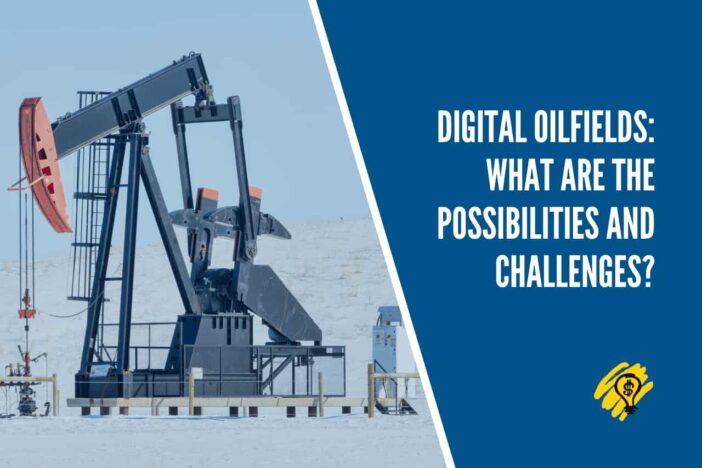There is a massive transformation taking place within the oil and gas industry. The digital transformation wave has almost reached almost every aspect of life, and this industry is facing the same challenges thanks to a mix of disruptive technologies such as cloud computing, Industrial Internet of Things (IIoT), artificial intelligence (AI), and augmented reality.
Currently, oil companies are operating in a highly volatile environment. Oil prices are low, causing operators to work on very slim margins as they struggle to generate revenue. A Digital Oil & Gas Solutions that incorporates sensor technology and cloud-based big data analytics can deal with this challenge.
In the oil and gas industry, digital oilfields, where real-time data is fed continuously from distant monitoring stations to computers, and optimized for oil production by computers, are one of the quickest-growing research fields. Often referred to as the future of oil and gas, it is the latest buzzword in this industry.
Oilfields to be disrupted by digital technology
It’s clear that the digital revolution will have a profound impact on many industries in the coming decades. Within the oil and gas industry, employees, producers, and suppliers are feeling the effects of the current economic conditions. Using digital oilfields companies can exploit limited resources using technology-oriented solutions. Such technology can help employees analyze the increasing volumes of data generated by technology such as downhole separations, MWD (Measure-While Drilling) applications, downhole multiphase sensors, and multilateral completions more accurately and quickly.
The future of oil fields is digital
Oil and gas companies will definitely benefit from digital oilfields in the future. Below is one example that will illustrate this. In the next two years, international oil consumption will roughly double.
Human labor and capital expenses are strained by this increased level of consumption. Even though a growing revenue from oil drilling can justify capital expenditures, human labor cannot be used indefinitely.
Digital oilfields are very useful in this regard as they enable the oil sector to extract much more hydrocarbons with minimal resources. A number of minute data points are transmitted to computers situated at the supervising station by sensors installed on pipelines, wellheads, and other equipment installed along the upstream. By analyzing these data points, valuable details can be obtained about the condition and output.
The foray of top engineering companies
Many engineering companies have entered this field because of the benefits that digital oil fields provide.
- The main advantage is that it increases the productivity of the labor force to a great extent by boosting the efficiency of the process.
- Oil extraction volumes can be controlled in a digital oilfield with automatic pump controls via real-time, near-real-time, or near-real-time data fed to the systems.
- The data can be used to predict surface conditions and track the efficiency of equipment, thereby reducing downtime for rigs.
- The digital oilfield may help in calculating future production estimates by integrating the field information with details from third-party seismic analyses.
- It is estimated that digital oilfields will increase oil’s present net value by almost 25%.
In recent years, several leading engineering companies have entered the digital oilfields market due to the benefits and opportunities it offers. By implementing an enterprise-level data management system, organizations can significantly increase the productivity of their digital oilfields.
The Journey to the Future
The oil and gas industry is cutting down costs by investing in digital technology. This enables faster, better decisions. Upstream portfolio expansion necessitates high-quality expertise in allocation and regulatory reporting, as well as volumetric accounting.
The transition from analog to digital has resulted in several tactical and strategic solutions everywhere in the oil industry. In addition to excellence centers connecting the best minds to the most pressing issues, workflow-oriented collaboration, visualization, virtualization, and optimization improve the speed of decision-making and insight.
Engineering solutions are already being used by many oil and gas companies to improve oil production, and this trend is expected to continue in the future as well. In light of the fact that technology is transforming the industry, we can fairly say that “Digital is the new Oil”.





